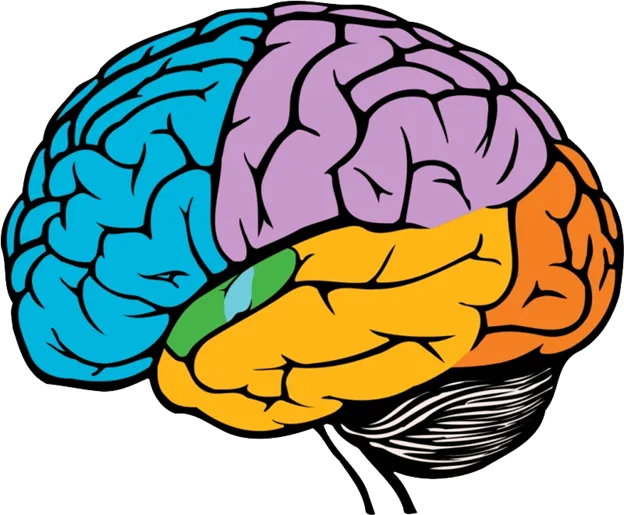Ever notice how your motivation seems to go into hibernation the minute the clocks change? One day you’re feeling productive and full of energy, and the next, you’re wondering if pajamas count as work attire and why it suddenly feels like bedtime at 4:30 p.m.
If this sounds familiar, you’re not alone. Many adults with ADHD notice that as the days get shorter and darker, their focus, mood, and energy levels take a hit. There’s a good reason for that — and it has nothing to do with “laziness.” Let’s shed a little (sun)light on what’s really going on.
The Science of Seasonal Slumps

Our brains are wired to respond to light. Sunlight triggers the production of serotonin (a mood-stabilizing chemical) and helps regulate dopamine, the neurotransmitter that drives focus, motivation, and reward — the same one that the ADHD brain tends to run low on.
When the sun starts setting before dinner, your body’s internal clock (circadian rhythm) gets confused. Less sunlight means less serotonin and dopamine, which can lead to:
- Feeling sluggish or unmotivated
- Oversleeping or struggling to get out of bed
- Increased irritability or “blah” moods
- Cravings for carbs and comfort foods
- Difficulty focusing or following through on tasks
In other words: your brain is responding to real, biological changes — not a character flaw. You’re not failing at adulting; your neurotransmitters are just taking a winter nap.
Why ADHD Brains Feel It More

Everyone can feel a dip in energy this time of year, but for ADHDers, the impact is often amplified. Here’s why:
- We’re already running low on dopamine. Seasonal drops in light and activity hit harder when your baseline is already low.
- Our internal clocks are… creative. Many ADHDers have irregular sleep patterns, so the sudden shift in daylight can completely throw off rhythm and focus.
- We thrive on stimulation. When winter takes away the outdoor novelty, color, and sensory richness of summer, we can feel stuck or restless.
The result? A perfect storm of sluggishness and distraction — with a side of guilt for not “snapping out of it.”
But here’s the good news: there are ways to outsmart the seasonal slump without needing to move to the equator or live entirely on pumpkin spice lattes (tempting, though).
Bright Ideas for Beating the Seasonal ADHD Blues
Let’s talk practical strategies — simple, doable things that can help your brain stay balanced and bright, even when the sun isn’t.
1. Get (Real or Artificial) Light in the Morning

If possible, spend 10–15 minutes outside within an hour of waking. Even cloudy daylight helps reset your circadian rhythm and boost alertness. Can’t get outdoors? Consider a light therapy lamp — they mimic natural sunlight and can improve mood and energy. My favorite and the one my clients have seen makes a really big difference for them is the HappyLight therapy lamp. The happy light is a great addition to your ADHD Toolbox. It boosts mood and energy while improving sleep and focus.(Check out my full ADHD toolbox picks Here.)
2. Move Your Body — Especially Early in the Day
Physical activity increases dopamine and serotonin. It doesn’t have to be a full workout; a brisk walk, dance break, or even a few minutes of stretching by the window can help. Bonus points if you pair it with sunlight and music you love.
3. Add Novelty to Your Routine
ADHD brains crave stimulation. If you’re feeling stuck in a rut, shake things up — rearrange your workspace, change your playlist, try a new recipe, or work from a cozy coffee shop for an hour. Tiny novelty boosts dopamine and keeps your brain interested.
4. Warmth and Comfort (Without Total Hibernation)
Cold weather naturally makes us crave comfort, which is fine — just balance it with connection and engagement. Light a candle, sip tea, wear that ridiculously soft sweater and check one small task off your list. Comfort and productivity can coexist!
5. Watch Your Self-Talk
When your energy dips, it’s easy to slip into “What’s wrong with me?” thinking. Replace that with compassion and curiosity: “My brain is adjusting to the season — what would help me feel supported right now?”
You’ll get a lot farther with kindness than criticism.
Mood Management for the Darker Months
Because ADHD and emotional regulation are deeply connected, it’s important to nurture your mental well-being during this time. Here are a few ADHD-friendly ways to lift your mood:

- Schedule joy — don’t wait for it to happen. Put fun, connection, or creativity on your calendar like any other commitment.
- Get professional support if needed — if your mood drops significantly each year, you might be dealing with Seasonal Affective Disorder (SAD), which is common and treatable.
- Use sensory grounding — light a candle, wrap yourself in a soft blanket, play calming sounds, or focus on your breath for a few moments.
- Connect with others — social time helps restore dopamine and breaks isolation. Even a quick call or voice memo counts.
Reframing the Season
Winter doesn’t have to be a productivity black hole. Think of it as an invitation to slow down, reflect, and restore. Your brain is recalibrating — not quitting. Instead of fighting your natural rhythm, try working with it:
- Adjust your expectations (aim for steady, not superhuman).
- Prioritize rest and replenishment.
- Celebrate small wins — they still count, even if they happen in slippers.
As I often tell my clients: your energy is like sunlight — it ebbs and flows. The key is learning how to catch it when it shines and nurture it when it dims.
Final Thought
If your motivation’s gone missing this month, remember: it’s not you — it’s November. Your ADHD brain just needs a little more light, movement, novelty, and care to stay balanced.
So open the curtains, take a few deep breaths, and maybe step outside for a dose of daylight. The sun — and your focus — will come back around.

